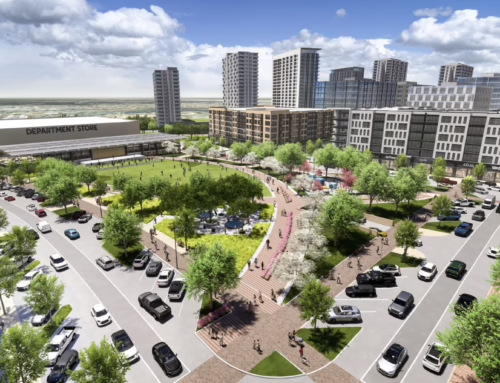Here are some of the greatest threats facing the construction industry heading into 2026 — especially relevant for the AEC world you move in — along with how firms (and you, as a leader) might respond. I’ll frame each threat with what to watch + strategic implications for your role in the St. Louis/AEC community. In the following issues a deeper dive into each will be shared. Stay tuned in!
Summary Chart of Threats
| Threat | Key Concern | Implication for AEC Firms |
| Labor shortage | Lack of skilled workers | Need workforce pipeline, training, diversity |
| Input costs/supply chain | Material escalation, delays | Smart procurement, risk clauses, local sourcing |
| Tech/productivity gap | Low adoption of productivity tools | Competitive disadvantage |
| Policy/interest/ESG risk | Uncertainty, cost of compliance | Contract and strategy adjustments |
| Sustainability/ESG | Stranded assets, client demands | Early adoption, lifecycle focus |
| Market segment slowdown | Order book risks in some sectors | Diversification, portfolio review |
| Changing delivery models | Faster, modular, efficient delivery | Embrace new methods to stay relevant |
- Workforce & Skilled Trade Shortages
Why it matters: In Missouri, 77% of contractors cited rising labor-costs and 70% cited worker shortages as top concerns. MU Extension Aging craft-workers and fewer younger workers entering trades compound the issue.
What firms should do:
- Partner with local trade schools, high schools and apprenticeship programs to build pipeline. Support the local efforts to start the process of trade careers early!
- Offer cross-training and multi-skilling (so fewer people can cover more roles).
- Consider modular or pre-fabrication methods (which reduce reliance on on-site craft labor).
- Rising Input Costs & Supply‐Chain Vulnerability
Why it matters: Material cost inflation, tariffs and logistics delays are national threats, and regional firms may feel them acutely when sourcing from global or long-haul supply-chains.
What firms should do:
- Lock-in pricing or include escalation clauses in contracts.
- Develop relationships with local/regional suppliers to reduce shipping risk.
- Review inventory, lead-times, and alternative materials (while balancing quality).
- Slowing Growth in Key Segments / Over-exposure Risk
Why it matters: Forecasts show non-residential and manufacturing-facility construction spending may slow or decline in 2026. HPAC+2Atradius+2 For example, in the Midwest nonresidential starts are expected to ease after 2025. ConstructConnect News
What firms should do:
- Examine their project mix: if heavily exposed to manufacturing or commercial office, consider shifting into infrastructure, renovation, or institutional work.
- Diversify client base and delivery models.
- Monitor bids and pipeline of work for signs of segment stress.
- Technology/Productivity Gap
Why it matters: Firms that haven’t adopted digital tools, modular methods or prefabrication risk falling behind in cost-productivity, scheduling and quality.
What firms should do:
- Start small: pick one repeatable scope (e.g., bathroom pods, MEP racks) to pilot offsite assembly.
- Invest in training for staff on BIM, data analytics, project-monitoring tools.
- Measure productivity improvements (e.g., hours per unit installed, rework hours avoided).
- Policy / Regulatory & Financing Uncertainty
Why it matters: According to JLL, policy-driven market dynamics (tariffs, labour/immigration law changes, incentive regimes) are reshaping regional construction economics. JLL+1 Financing costs remain elevated, especially in regional markets.
What firms should do:
- Stay plugged into regulatory updates (state labour/immigration/contract law changes).
- Ensure contracts account for interest-rate risk, material escalation, site/permitting delays.
- Build relationships with regional banks and bonding agents to secure better financing terms.
- Sustainability / ESG Requirements & Owner Expectations
Why it matters: Owners and investors increasingly demand low-carbon, resilient buildings and infrastructure. Failure to respond may lead to exclusion from certain bids or reputational challenges.
What firms should do:
- Develop capability and credentials in sustainable construction (LEED, net-zero, lifecycle planning).
- Track and quantify embodied carbon, energy performance and resilience for regional projects.
- Use sustainability as a differentiator in proposals to win more forward-looking work.
- Contract Risk & Margin Pressure
Why it matters: With input-cost inflation, labor volatility and slower segment growth, margins are under siege. Also, insurance premiums and risk exposures are rising.
What firms should do:
- Revisit contract terms: include escalation clauses, clear risk allocation, contingency buffers.
- Review insurance coverage and risk management practices, ensure gaps are addressed.
- Monitor project performance closely (cost, schedule, change orders) and react early to cost/cash-flow drift.
- Changing Delivery Models & Client Demands for Speed/Value
Why it matters: Clients want faster delivery, greater transparency, improved value — meaning firms sticking to old models may lose out.
What firms should do:
- Adopt delivery models like Design-Build, Integrated Project Delivery (IPD), or lean construction techniques.
- Invest in early planning and design for manufacture & assembly (DfMA).
- Work on improving client communication, transparency around schedule/cost/quality.
- Regional Infrastructure & Labor Market Constraints
Why it matters: In the Midwest and Missouri region, infrastructure projects are substantial and firms may compete heavily for them — yet labor constraints, permitting/time delays, and regional supply bottlenecks pose threats. MU Extension+1
What firms should do:
- Position themselves for infrastructure work by building relevant expertise (public work, water/wastewater, transportation).
- Build alliances (subcontractor networks, joint ventures) to scale capacity when bids emerge.
- Track regional pipeline (state DOT, municipal, federal infrastructure spending) and allocate resources accordingly.
- Market & Economic Cycles / Capital Availability
Why it matters: Growth projections are modest for 2026; capital becomes more cautious; economic headwinds could lead to project delays or cancellations. Architect Magazine+1
What firms should do:
- Maintain financial discipline: keep liquidity, reassess overhead, avoid over-commitment to long-tail contracts.
- Monitor bid odds and pipeline health: prefer projects with committed funding and clear timelines.
- Explore alternative markets (retrofit, renovations, resilient infrastructure) which may fare better in tighter cycles.
Final Thought
These threats translate into strategic imperatives: build resilience, sharpen execution, embrace technology/alternate delivery, and diversify.






